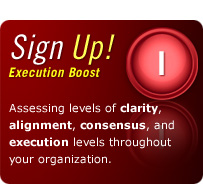Self-Mastery Tip: Using Leisure Time in Satisfying Ways
January 6th, 2010
Being able to truly “relax and recharge” during leisure time is often so important to feeling good about one’s life, both personal and professional. Using our leisure time well can result in increased energy, better moods, fewer illnesses and enhanced creativity. It can also result in more feelings of optimism, self-esteem and enjoyment. Tasks that seem difficult or people who we just cannot seem to work with can all become much less of a challenge when we face them refreshed and energized. All too often, we either set aside little to no time for deeply satisfying leisure or choose to utilize the leisure time we do have in ways that drain (rather than recharge) us.
Leisure time can be used in more satisfying ways by understanding how important this is (to ourselves and to those around us) and committing to doing so regularly. Here are some ways people have been able to use their leisure time to truly recharge themselves:
- Decrease time spent in dissatisfying leisure activities. Very often, it can seem as though we do not have enough time to engage in satisfying leisure time. However, it is frequently the case that we do have this time; it is just often spent in dissatisfying (and frequently unconscious) ways. To become more aware of how we spend (or mis-spend) our leisure time, it can be helpful to identify 2-3 of the most time-consuming leisure activities that take up our time that do not truly recharge and/or relax us and seek to minimize time spent in those activities. Some common examples of such activities that we have encountered over the years are channel or internet surfing, spending time with draining/dissatisfying people, or worrying about things that we have no control over. Decreasing time spent in activities that we do not truly love to engage in often opens up more time for the things we really want to do. In fact, it’s been our experience that people who become more aware of how they use their leisure time often find 5-20 extra hours every week!
- Increase time spent in satisfying leisure activities. Once we have minimized dissatisfying leisure activities, it is often the case that 5, 10 or even 20 more hours are available to us every week for satisfying leisure time. It can then be helpful to take more control over our leisure time by identifying 2-3 activities that we really enjoy doing to replace the old, less satisfying activities. Some examples of activities that people we have worked with over the years have chosen are reading, spending more time in favorite places/with favorite people, engaging in a class just for the enjoyment of it, catching up on some sleep from time to time or engaging in activities that bring about more centered, peaceful states of mind. Becoming clear about what truly satisfies and recharges us makes it more likely that we will experience a more energized, focused and calm mind and body.
- Recruit “satisfying leisure social support.” Some of us can find ourselves in social circles (both personal and professional) that do not understand or value the power of satisfying leisure time. Some people falsely believe that spending time in satisfying ways is “bad” or “lazy,” which can motivate them to try to make those of us using our leisure time in satisfying ways feel guilty about it. Because this can be such a common attitude toward leisure time, it can be important to find people who are supportive of our commitment to satisfying leisure, rather than dismissive of it. Finding others who recognize how important it is to relax and recharge on a regular basis can make it more likely that we continue to do so. Click here for more on recruiting effective social support.
NOTE TO THOSE USING THE MISSION FULFILLMENT SYSTEM: You can move toward more satisfying leisure time by adding a new Objective to your system by using the “Add New Item” link (for example, “Use my leisure time in satisfying ways”). You can then develop a SMART Goal related to that new Objective by using the “Add Subitem” link to the far right of the new Objective (for example, “Identify activities that truly relax and recharge me and perform them for at least 30-60 minutes per day for 4-7 days a week.”).
FOR THOSE WHO ARE NOT ON THE MISSION FULFILLMENT SYSTEM: Click here to for more information and click here to sign up.
FINAL NOTE: If you were linked to this article by a video or email, please return to that link and proceed with any other instructions that you deem helpful. For more Execution Excellence and Self-Mastery tips and tools visit our site at: www.excellenceuniversity.net
Article Filed under: 1. Self-Mastery Tips



1 Comment Add your own
1. Lindsey E | October 22nd, 2014 at 6:48 pm
For whatever reason, there seems to be a stigma that follows “leisure time” and actually using it to the best of our ability. I have no idea why this is so, because if you ask me, people seem to function better (both in higher quality work and general motivation levels) after some leisure time. We all need time to re-center ourselves from time to time.
However, another plague, which this post touches on, is the tendency to use leisure time in dissatisfying ways. I can’t tell you how many times I have asked someone what they did in their spare time, only to be met with an answer such as “lay in bed all day” or “surf the internet all day”… to which none of them were satisfied. For whatever reason, people seem to struggle with determining what a satisfying leisure activity is and what is not.
For example, personally, facebook is definitely a dissatisfying activity that creeps into my leisure time. To help deal with this, I took a week break from facebook and filled that time in with other, more satisfying activities (such as hooping and yoga). It amazed me how much more time I found by avoiding such a simple, yet time-consuming, activity.
Also, due to a variety of stresses lately, I have decided to take a week vacation and get out of the city I currently live in. I am going to go visit old friends I don’t get to see often, and hopefully family as well. The people I am planning on seeing fall under the category of satisfying social support, so I think it will be a fun time! From hooping to video games to just talking, I think it will be an overall satisfying leisure time experience.
I think one way to discern whether or not an activity is satisfying is to truly understand the concepts of intrinsic versus extrinsic motivation. Intrinsic motivation is doing something for the sake of the enjoyment brought by doing it, whereas extrinsic motivation is doing something for the sake of the external reward (such as money, a good grade, or to make someone else happy) (Ryan & Deci, 2000). If you engage in a leisure activity for some external means (such as to gain more likes on facebook), then it is less likely to lead to deep satisfaction. However, if you do the activity because you truly enjoy it, then it is most likely a satisfying activity. This is because when you have control over the activity, then it’s easier to bring satisfaction, whereas depending on an external source (such as likes on facebook), is out of your control (and thus harder to achieve deep satisfaction).
For example, I do yoga often because I thoroughly enjoy it. It makes me feel nice and helps cultivate my peace of mind (http://www.excellenceuniversity.net/journal/625/self-mastery-tip-cultivate-your-peace-of-mind). Sometimes, my roommate joins me in it. However, I do not solely do yoga because my roommate wants me to; I do it because I want to and I am intrinsically motivated to do so. In this way, I am very likely to experience deep satisfaction because my leisure time activities are in my control, and I do not have to depend on something outside to achieve it.
Thus, I think learning what one is intrinsically motivated to do will help one determine what is a satisfying activity to one (and what is not). Keeping this in mind, it should be easier to find social support that aligns with these intrinsically motivated activities. For me, I have a hoop group and we meet up to hoop dance. For you, or whomever, it may be something else. But understanding what one is intrinsically motivated to do first will help all the above suggestions fall into place. Then, one can truly experience what satisfying leisure time is like, no matter how long or short it lasts!
References
Ryan, R. M., & Deci, E. L. (2000). Intrinsic and extrinsic motivations: Classic definitions and new directions. Contemporary Educational Psychology, 25, 54-67. doi:10.1006/ceps.1999.1020
Trackback this post | Subscribe to comments RSS Feed
Leave a Comment
Some HTML allowed:
<a href="" title=""> <abbr title=""> <acronym title=""> <b> <blockquote cite=""> <cite> <code> <del datetime=""> <em> <i> <q cite=""> <s> <strike> <strong>